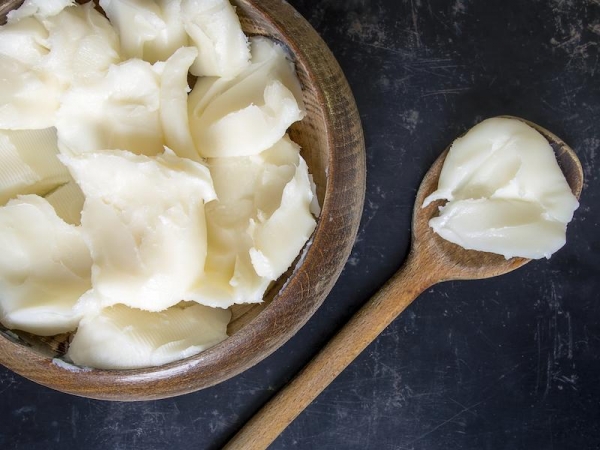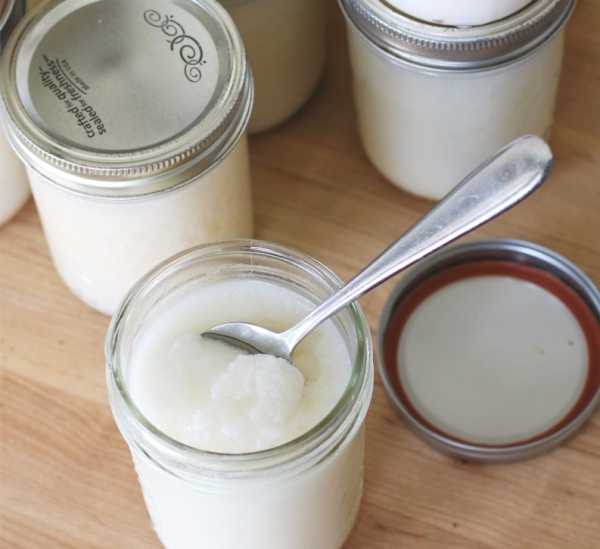Lard & Tallow
Rendering animal fats are very simple – in this recipe we will provide three ways to render lard and tallow/suet ►Lard from Pork FAT ►Tallow & Suet from Beef or Lamb FAT Ask your butcher for a big bag of any of the above animal fats (preferably organic) ► Dripping from a Duck, or Goose […]

| Prep Time | 15-20 Minutes |
| Cook Time | 2-4 Hours |
| Servings |
Mills
|
Ingredients
Option 1: Dripping in the oven - You will need a large oven tray with a dripping rack
- 1 Kg Raw Pork Fat Alternatives: Tallow (beef or lamb fat) cut off any excess meats
Option 2: Rendering in the oven - You will need a large oven tray
- 1 Kg Raw Pork Fat Alternatives: Tallow (beef or lamb fat) cut off any excess meats
- 1/8 0 1/4 Cup Filtered Sater
Option 3: Slow Cook Render - You will need a slow cooker
- 1 kg Raw Pork Fat Alternatives: Tallow (beef or lamb fat) cut off any excess meats
Ingredients
Option 1: Dripping in the oven - You will need a large oven tray with a dripping rack
Option 2: Rendering in the oven - You will need a large oven tray
Option 3: Slow Cook Render - You will need a slow cooker
|

|
Instructions
Option One: Oven Dripping
- Preheat the oven to 120 - 130 degrees Celsius.
- Trim off any meat still attached to the fat - we only want the fat. A little bit of meat left on the fat is harmless as it will drop out during the rendering process, however it will change the flavour.
- Place the fat pieces on your dripping rack and sit your dripping rack on or inside your oven pan.
- Render the fat for approximately 2-3 hours. The liquid fat will drip from the large piece of fat into the bottom pan.
- Remove from the heat and allow to cool a little before filtering through a stainless steel strainer. Discard the fat and pour the lard into heat tempered glass jars like the ball mason wide mouthed jars - see link for supplies below. Be careful not to pour into regular glass jars to avoid the risk of breakage.
Option Two: Oven Render
- Preheat the oven to 120 degrees Celsius.
- Trim off any meat still attached to the fat - we only want the fat. A little bit of meat left on the fat is harmless as it will drop out during the rendering process, however it will change the flavour.
- Cut your lard or tallow into small pieces (approximately 1 inch cubes) and place into your oven dish.
- Pour the water into the oven dish, this will reduce the lard or tallow from burning on the edges and the water will evaporate during the process.
- Place the oven dish inside and cover with a lid.
- Render for approximately 2 – 2 ½ hours whilst attending to it by stirring occasionally with a steel spoon. The fat cubes will gradually release its fat in liquid form whilst becoming crisp and shriveled. If you notice that the water has not yet evaporated, you can increase the temperature to 165 degrees Celsius and keep it uncovered for ten minutes.
- Remove from the heat and allow to cool a little before filtering through a stainless steel strainer. Discard the fat and pour the lard into heat tempered glass jars like the ball mason wide mouthed jars - see link for supplies below. Be careful not to pour into regular glass jars to avoid the risk of breakage.
Option 3: Slow Cooker
- Trim off any meat still attached to the fat - we only want the fat. A little bit of meat left on the fat is harmless as it will drop out during the rendering process, however it will change the flavour.
- Chop your fat into tiny small pieces. Alternatively you can mince the fat in a food processor or thermomix, however it is important to note that your fat will need to be frozen before you mince it or it will result in a slimy mess and clog the blades.
- Place the fat into your slow cooker. Turn it onto the lowest temperature and cook for 3 - 4 hours.
- Cooking times will vary depending on temperature, volume and size of the fat pieces but a general rule is to cook until you have small browned cracklings in a bath of clear fat.
- Remove from the heat and allow to cool a little before filtering through a stainless steel strainer. Discard the fat and pour the lard into heat tempered glass jars like the ball mason wide mouthed jars - see link for supplies below. Be careful not to pour into regular glass jars to avoid the risk of breakage.

Recipe Notes
Storage: Store in Ball mason wide mouthed freezer safe jars. These are heat tempered and will not crack when you pour the lard into them.
